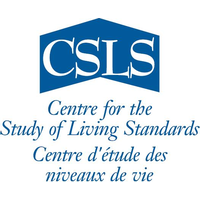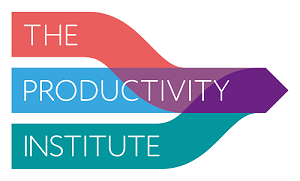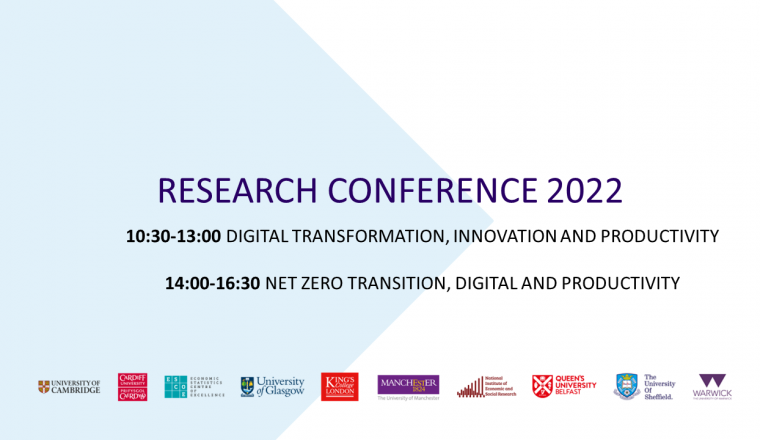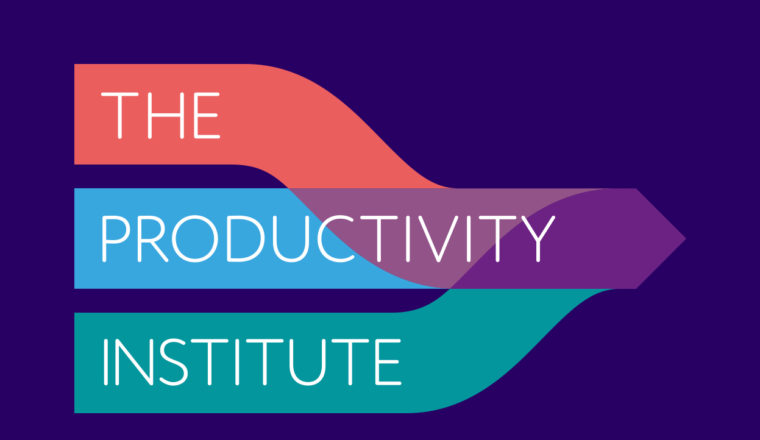No. 43, Fall 2022 with Symposium on Well-being and Productivity (Part 2)
The International Productivity Monitor (IPM) is the joint flagship publication of the Centre for the Study of Living Standards (CSLS) in Canada and The Productivity Institute.
Articles from the current edition of the IPM can be accessed below. Access to back issues from before 2021 as well as information on submission of papers for publication in the IPM can be obtained from the CSLS website.
To receive publication information and updates from the International Productivity Monitor, please subscribe to our mailing list.
Number 43, Fall 2022
- Masthead
- Table Of Contents
- Full text
- Inside Back Cover acknowledgements CSLS and TPI
Editors’ Overview Andrew Sharpe (Centre for the Studies of Living Standards) and Bart van Ark (The Productivity Institute, The University of Manchester)
- This edition of the International Productivity Monitor, No. 43, includes the second part of our Symposium on Productivity and Well-Being (the first part was published in the Spring issue No. 42) and two other articles.
The Symposium on Well-being and Productivity (Part 2)
Introduction to the Symposium Andrew Sharpe (Centre for the Studies of Living Standards), Bart van Ark (The Productivity Institute, The University of Manchester), and Dan Sichel (Wellesley College and NBER)
- The Spring 2022 issue of International Productivity Monitor took an important step to begin exploring linkages between productivity and well-being with a four article symposium. This issue includes a second part to the symposium with three articles that further explore these linkages. All seven articles were presented at an authors’ virtual workshop held November 16-17, 2021. The introduction to the Spring issue — in addition to summarizing the articles in that issue — included a discussion of the background and motivation of the symposium, organizational process, and key issues related to the productivity-well-being linkage. P
- PDF version of the appendix
A Measure of Well-Being Efficiency Based on the World Happiness Report Francesco Sarracino (STATEC Research) and Kelsey J. O’Connor (STATEC Research)
- We estimate a measure of well-being efficiency that assesses countries’ ability to transform inputs into subjective well-being (Cantril ladder). We use the six inputs (real GDP per capita, healthy life expectancy, social support, freedom of choice, absence of corruption, and generosity) identified in the World Happiness Reports and apply Data Envelopment Analysis to a sample of 126 countries. Efficiency scores reveal that high ranking subjective well-being countries, such as the Nordic countries, are not strictly the most efficient ones. Also, the scores are uncorrelated with a traditional (total factor) measure of economic efficiency. This suggests that the implicit assumption that economic efficiency promotes wellbeing is not supported. Subjective well-being efficiency can be improved by changing the amount (scale) or composition of inputs and their use (technical efficiency). For instance, countries with lower unemployment, and greater healthy life expectancy and optimism are more efficient.
- PDF version of the appendix
Productivity Gains from Worker Well-Being in Europe Chiara Peroni (STATEC Research), Maxime Pettinger (STATEC Research), and Francesco Sarracino (STATEC Research)
- This article investigates the relationship between well-being in the workplace and labour productivity using a combined dataset covering the business economies of 30 European countries. The dataset combines information on working conditions and on the structure and performance of industries in manufacturing, construction and services. Data are sourced from representative surveys on individuals’ working conditions and official structural business statistics. Regressions of labour productivity on measures of worker wellbeing — job satisfaction and a multidimensional index of job quality — provide evidence that a link between the two variables operates at the aggregate level: industries where worker well-being is higher have higher levels of labour productivity. This result implies that well-being in the workplace is not just desirable in itself, but it also contributes to labour productivity. This is relevant to firms, managers, unions, and policy makers as policies that foster worker well-being consequently can contribute to productivity growth.
- PDF version of the appendix
From Economic Productivity to Productive Well-Being: the Role of Life Satisfaction and Adjusted Net Savings Charles-Henri DiMaria (STATEC Research), Chiara Peroni (STATEC Research), and Francesco Sarracino (STATEC Research)
- Productivity – a driver of economic growth – is not necessarily compatible with societal well-being, nor environmental sustainability. Various authors contributed frameworks to incorporate environmental issues in the measurement of productivity, or studied the role of subjective well-being for productivity. However, studies proposing ways to account for both subjective well-being and sustainability in productivity measurement are scarce. We examine whether and to what extent it is possible to include subjective well-being and sustainability measures among the inputs and/or outputs of a traditional productivity framework. Specifically, we adopt a data-driven approach to test whether subjective wellbeing and adjusted net savings meaningfully contribute to computing a productivity-like indicator. We apply Data Envelopment Analysis (DEA) to European data from 2005 to 2018. We find that including subjective well-being among the inputs and the outputs of production meaningfully contributes to the measurement of total factor productivity.
- PDF version of the appendix
Reflections on Measuring and Improving Productivity When Subjective Well-being Is the Objective John F. Helliwell (University of British Columbia)
- This is a reflection by John Helliwell who served as a discussant in the authors’ workshop on measuring and improving productivity when subjective wellbeing is the objective. His article provides a valuable perspective on the state of the literature on the productivity-well-being linkages that are discussed in the symposium as well as direction for future research.
—-
Productivity Growth and Spillover across European and American Industries: A Global Value Perspective Based on EU KLEMS Weilin Liu (Nankai University), Qian Cheng (Nankai University), and Robin C. Sickles (Rice University)
- The development of production networks has promoted knowledge flows and technology diffusion among industries over the past decades, which affects the productivity growth for countries within these networks. This article examines productivity growth in the presence of inter-sectoral linkages. We construct a spatial production model with technological spillovers and productivity growth heterogeneity at the industry-level. We use the global value chain (GVC) linkages from inter-country input-output tables to model the technological interdependence among industries, and estimate total factor productivity (TFP) growth and its spillover among European countries. We find that the spillover effects from intermediate inputs are significant. There is a network effect of TFP growth from one country to another through input-output linkages. We provide a better understanding of the impact of spillover effects on TFP growth in the context of GVCs.
- PDF version of the appendix
Did Trade Liberalization Boost Total Factor Productivity Growth in Manufacturing in India in the 1990s? (Bishwanath Goldar, Institute of Economic Growth, Delhi)
- India undertook substantial trade reforms from 1991 onwards, accompanied by extensive industrial reforms. Several studies undertaken to date based on growth accounting have reported that total factor productivity (TFP) growth in Indian manufacturing in the initial seven to ten years of the post-reform period was lower than that in the decade before the reforms. This finding is in sharp conflict with the sizeable econometric literature that has unambiguously established a positive effect of trade reforms on productivity, backed by strong theoretical reasons to expect such an effect. This article asserts that certain corrections are required in the computation of TFP growth in Indian manufacturing for the 1980s and 1990s for making a valid comparison and presents the corrected TFP growth rates. Further, an argument is built theoretically with some preliminary empirical support that a downward estimation bias is likely to arise when the conventional growth-accounting approach to the measurement of TFP growth is applied to a situation when major trade reforms are underway, as was the case with Indian manufacturing in the 1990s. Based on the TFP growth estimates obtained, a supportive plant-level analysis of the impact of tariff reform on productivity of Indian manufacturing plants, and the identified possible downward bias in TFP estimation, it is argued that in all probability the productivity growth performance of Indian manufacturing was better in the 1990s following the reforms than the performance in the 1980s.
- PDF version of the appendix
About The International Productivity Monitor
The International Productivity Monitor is a completely Open Access journal published by the Centre for the Study of Living Standards (CSLS). The objective of the Monitor is to focus attention on the importance of productivity for improving living standards and quality of life. The Monitor ranks within the top fifth of all economic journals on RePEc with an impact factor of 2.718, and is in the top 10 per cent of all economic journals by file downloads.
The Monitor publishes high-quality peer-reviewed articles on productivity issues, trends and developments in Canada, the United Kingdom and other countries and serves as a vehicle for the international discussion of productivity topics. We do not charge submission fees for these articles. Print and online versions are published twice a year in English. The articles are largely nontechnical in nature and understandable to a wide audience of productivity researchers and analysts as well as the general public. The publication is distributed electronically to anyone interested in productivity issues on a complimentary basis.







